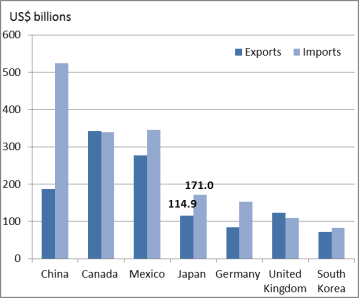Figure 1. U.S. Goods and Services Trade with Top Partners, 2017

Source: U.S. Census Bureau and Bureau of Economic Analysis.
On September 26, 2018, President Trump and Japanese Prime Minister Abe announced plans to enter into formal bilateral negotiations for a "United-States Japan Trade Agreement on goods, as well as on other key areas including services, that can produce early achievements." The announcement appeared to end a nearly two-year stalemate, in which Japan was resisting U.S. pressure to enter into bilateral trade talks, and at least temporarily suspended the threat of new U.S. tariffs against Japanese motor vehicles and auto parts.
While the joint statement offers few details on overall negotiating objectives, both sides committed that, in conducting negotiations, they will "respect positions of the other government" on market access outcomes in the auto and agricultural sectors, in particular—namely, the U.S. goal of creating production and jobs in the U.S. auto sector and the Japanese goal of protecting its agricultural sector. They also committed to:
The last point refers to recent U.S. tariff actions, which President Trump has indicated were an attempt to pressure Japan, and other trading partners, into trade negotiations. In March, President Trump proclaimed new steel and aluminum tariffs following a Section 232 investigation over the national security implications of U.S. imports of these products. An additional Section 232 investigation on imports of motor vehicles and auto parts remains ongoing, a major concern for top auto exporters such as Japan. As it did with the European Union, the Trump Administration agreed it would refrain from imposing any new auto tariffs on Japan while the new talks proceed, and will consider discussing possible alternatives to the steel tariffs.
The Trump Administration has sought bilateral negotiations as a way to reduce the U.S. trade deficit with Japan ($56 billion in goods and services in 2017). In 2016, the United States and Japan essentially had completed FTA negotiations, as part of the 12-nation Trans-Pacific Partnership (TPP) agreement. President Trump withdrew from the TPP in 2017, after it had been signed but before it was enacted. In early March, Japan with remaining TPP members, signed the Comprehensive and Progressive Agreement for Trans-Pacific Partnership (CPTPP or TPP-11), a modified version of TPP. Japan is among the three countries that have ratified the agreement to date. Japan had been hesitant to engage in bilateral talks with the United States, instead urging a U.S. return to the regional TPP.
As a top U.S. trade and investment partner, Japan is a longstanding U.S. priority for trade negotiations (Figure 1). Autos and auto parts are a major driver of the U.S.-Japan goods trade deficit (about $50 billion of $70 billion), and historically, a source of bilateral trade frictions, particularly concerns over U.S. access to the Japanese market. At the same time, Japan is a key source of investment supporting motor vehicle and parts production in the United States—and overall the second largest source of U.S. foreign direct investment (FDI).
|
Figure 1. U.S. Goods and Services Trade with Top Partners, 2017 |
 |
|
Source: U.S. Census Bureau and Bureau of Economic Analysis. |
Outlook for U.S.-Japan Trade Talks
Some Members of Congress and U.S. stakeholders welcomed the Administration's announcement to initiate formal trade talks with Japan. Proponents of a U.S.-Japan FTA highlight the potential economic benefits of gaining new access to the Japanese market, particularly for agriculture and services, and dismantling various nontariff barriers. Both countries also share several priorities in advancing new regional and global trade rules, including in areas such as digital trade.
Whether the new trade talks will seek a comprehensive agenda based on past U.S. practice is uncertain. The joint statement suggests a more limited scope, focused on "early achievements"—USTR Lighthizer suggested talks are likely to proceed in two phases, with initial talks seeking an "early harvest" on reducing tariffs and other barriers to goods trade. Notably, both sides refrained from calling the prospective deal a "free trade agreement"—Prime Minister Abe emphasized the agreement's focus on goods as "entirely different from the comprehensive FTAs that Japan has negotiated." Some analysts are skeptical that the agreement will achieve meaningful trade liberalization; others viewed the talks as a favorable political compromise, especially for Japan.
Several issues may affect both the substance and timing of the new negotiations. These include: